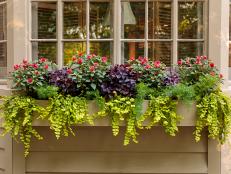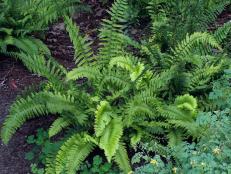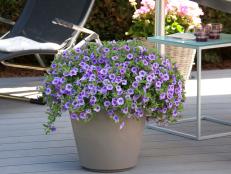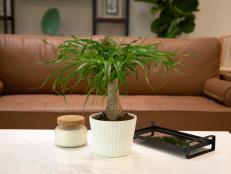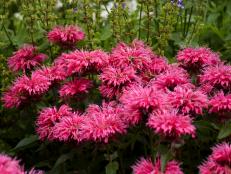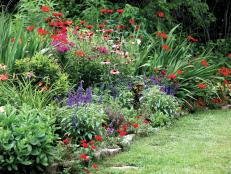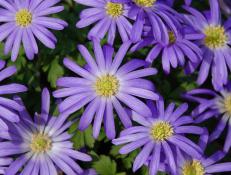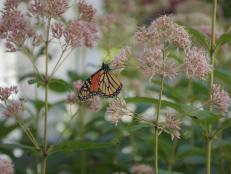Paul's New Plant Picks
Master gardener Paul James shows off a few of his plant picks for containers.

Kangaroo paw
Anigozanthus 'Big Roo Orange' is an unusual plant that hails from Australia. An annual throughout much of the U.S., kangaroo paw needs full sun and prefers acidic soil. Its sword-like leaves and curiously fuzzy flowers make it a real standout in any setting.
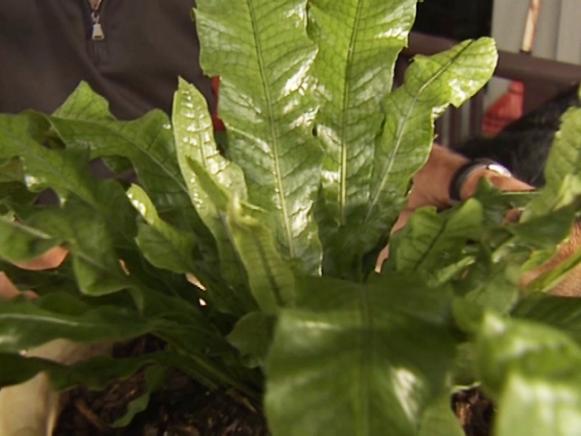
Crocodile fern
Crocodile fern (Microsorum) gets its name from the look and texture of its leaves, and its scaly, strap-like foliage is unlike many other ferns. It prefers acidic soil that never dries out and does best in shade, although it can take a little morning sun. It's hardy in USDA Zone 9 and warmer.

Golden dracaena
This tropical beauty lightens up shady spots like no other plants can. Because it's tender to frost, golden dracaena needs to go inside when temperatures drop into the 50s, but it also makes a great houseplant. Outdoors, it needs light shade and regular watering.
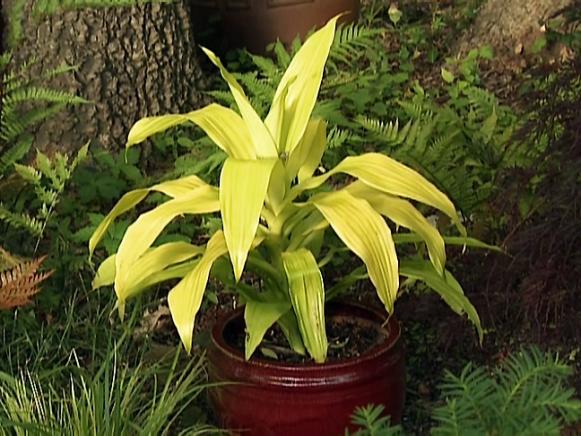
Thread agave
Thread agave (Agave filifera) is aptly named for the way the leaf margins break away, leaving long, white fibers. It grows in full sun to partial shade. Hardy in USDA Zones 8b to 11.

Waxflower
Waxflower (Chamelaucium) is a warm-climate evergreen shrub that needs full sun and well-drained soil in its native habitat. But in a container, make sure to water it sparingly. Once it's finished blooming, cut it back by about half and it may bloom again. Its pink blooms make excellent cutflowers. Hardy in USDA Zones 9 to 11.

Calathea
Valued for their colorful foliage, calatheas are evergreen in their native habitat. This variegated form needs shade and constant moisture, but beyond that it's easy to grow. Hardy in USDA Zones 10 to 11.
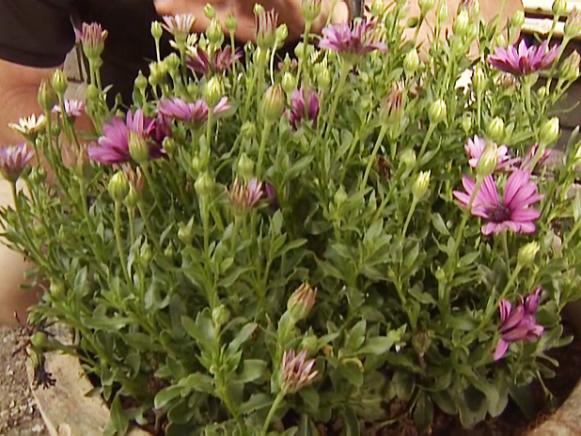
Osteospermum
Osteospermum 'Soprano' blooms nearly nonstop throughout the summer, and it needs little more than full sun and well-drained soil. Flower colors range from pink and purple to white and orange. Treat it as an annual.

'Rudolph' euphorbia
This wood spurge (Euphorbia x martinii 'Rudolph') has evergreen foliage, but the new growth at the plant tips are bright red, hence the name. It grows best in part shade and moist, well-draining soil. Plant size is 18 to 24 inches tall. Hardy in USDA Zones (6)7 to 10. Note: Plant sap may cause skin irritation.

'Bonfire' euphorbia
The spring "flowers" (bracts) are an intense golden-yellow. After emerging green, the foliage turns maroon and holds until fall. These plants do best in partial shade and moist but well-drained soil. Hardy in USDA Zones (6)7 to 10. Note: Plant sap may cause skin irritation.

Variegated false holly
Osmanthus heterophyllus 'Goshiki' is an evergreen member of the olive family. The leaves of this plant look like those of many hollies, and their variegation is stunning in their detail. 'Goshiki' will grow to eight feet, but in a pot it will get only half that tall. Grow it in partial shade to full sun and a moist, well-draining soil. Hardy in USDA Zones 6 to 9.

'Prairie Dusk' penstemon
Penstemon barbatus 'Prairie Dusk' has pink flower spikes and evergreen foliage. Its tubular flowers attract hummingbirds. Grow it in full sun to light shade and a moist, well-draining soil. Once established, this plant is drought tolerant. Hardy in USDA Zones 4 to 9.

'Passionate Rainbow' gaura
This drought-tolerant perennial has airy pink flowers and grows best in full sun and well-draining soil. Hardy in USDA Zone 7 and warmer.
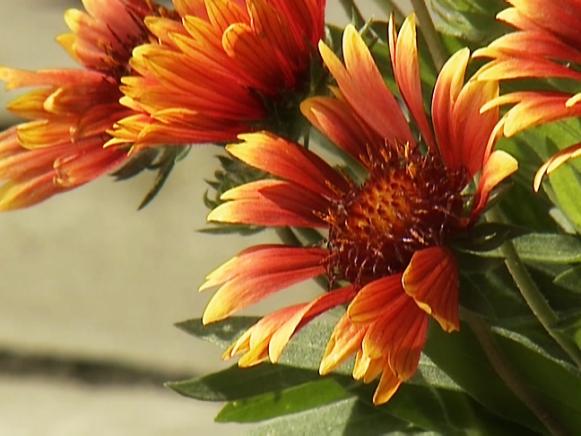
'Goblin' gaillardia
Despite its scary name, this blanket flower has bright orange-red flowers that attract wildlife, such as bees and butterflies, to the garden. Plant it in full sun in a waterwise garden, which means that it tolerates dry growing conditions. Hardy in USDA Zones (3)4 to 11.

Dwarf bald cypress
Unlike its full-sized cousin, which can grow to well over `00 feet, this dwarf bald cypress (Taxodium distichum 'Peve Minaret') tops out at a mere eight to 10 feet tall and therefore makes a great specimen in a pot. Hardy to USDA Zone 4.

Golden Leyland cypress
Golden Leyland cypress holds its gold color year-round, unlike many gold-colored plants whose color tends to fade in summer. Hardy in USDA Zones 5 and warmer.






